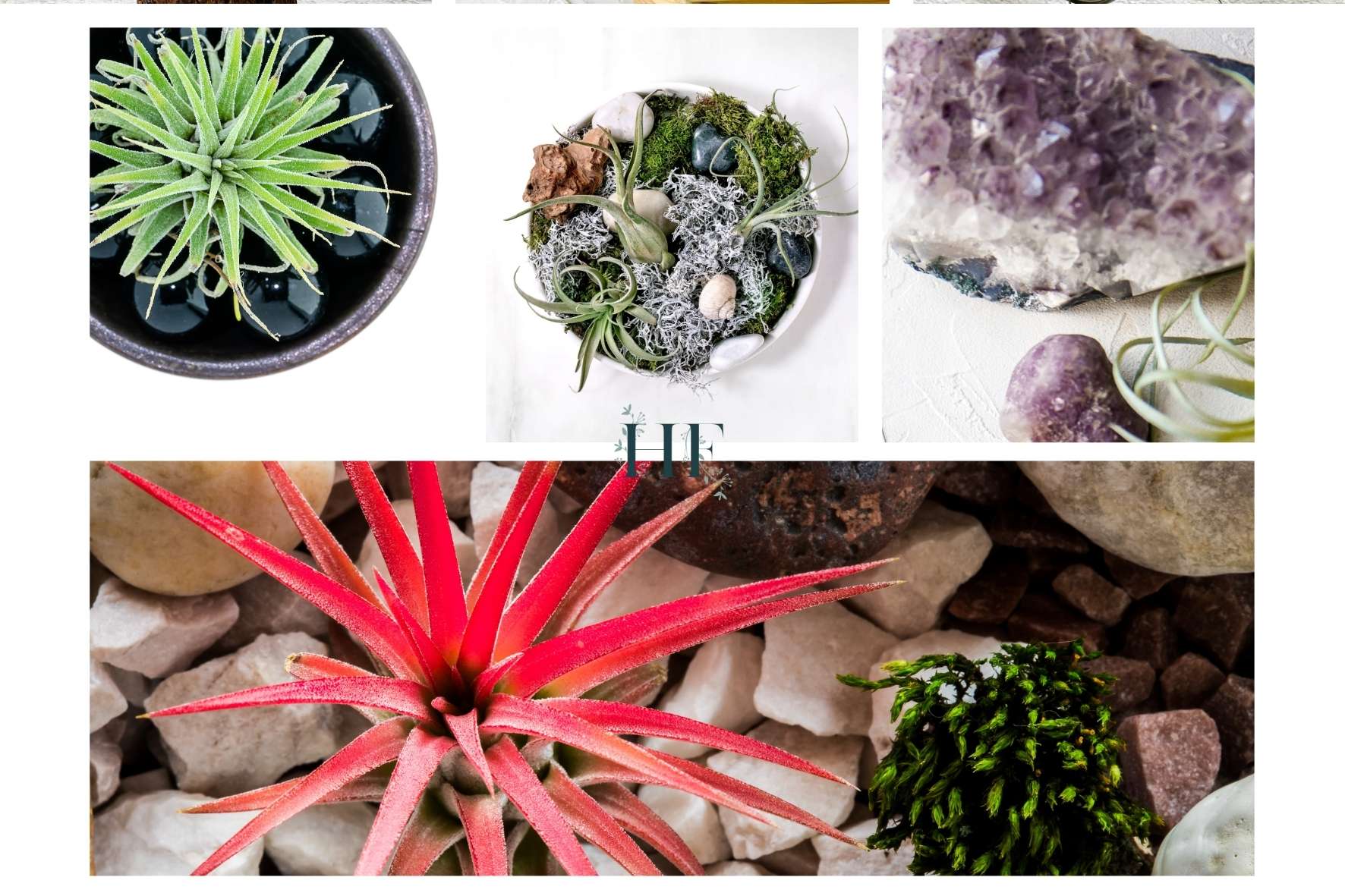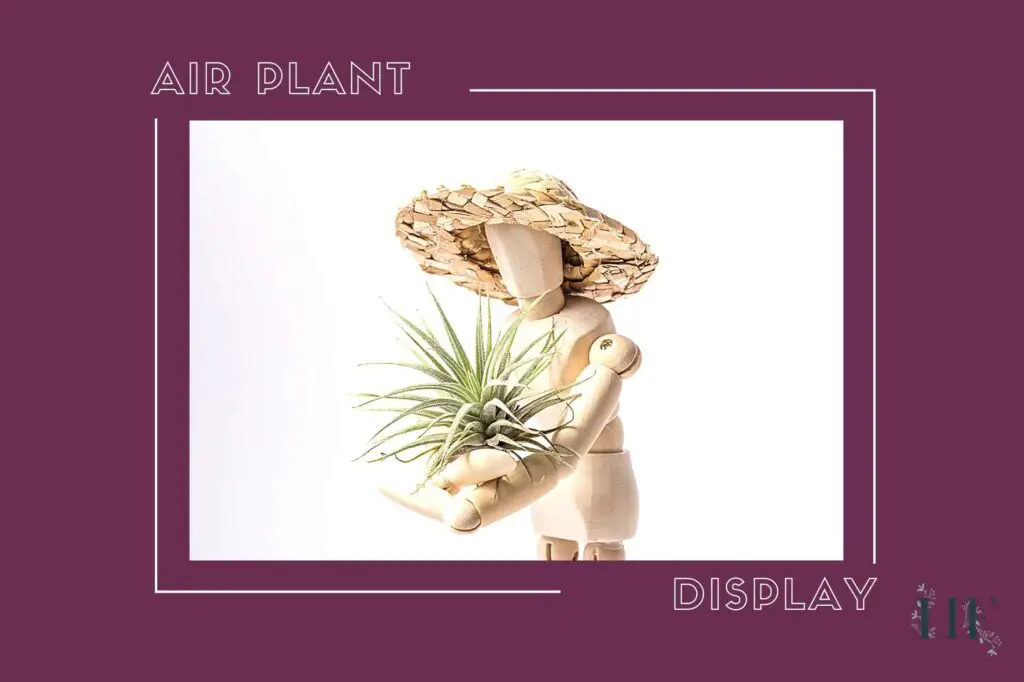As air plants take all their moisture and nutrients through their leaves and don’t need soil, they are very versatile to display. You can arrange them in pretty much anything and get creative.
But, let’s not forget that air plants are living things and it’s important to understand their needs when choosing a display, so you don’t harm them unintentionally.
When considering air plant arrangements, don’t forget that you have to be able to water them and they have to be placed somewhere that they will get sufficient light.
Air Plant Display Ideas
Tillandsias can grow basically anywhere: on rocks, in a seashell or on coral, in ceramic or pottery, attached to wood, on a glass container… as long as you follow a species-appropriate air plant care.
Here are 10 ideas on how to display air plants in your home:
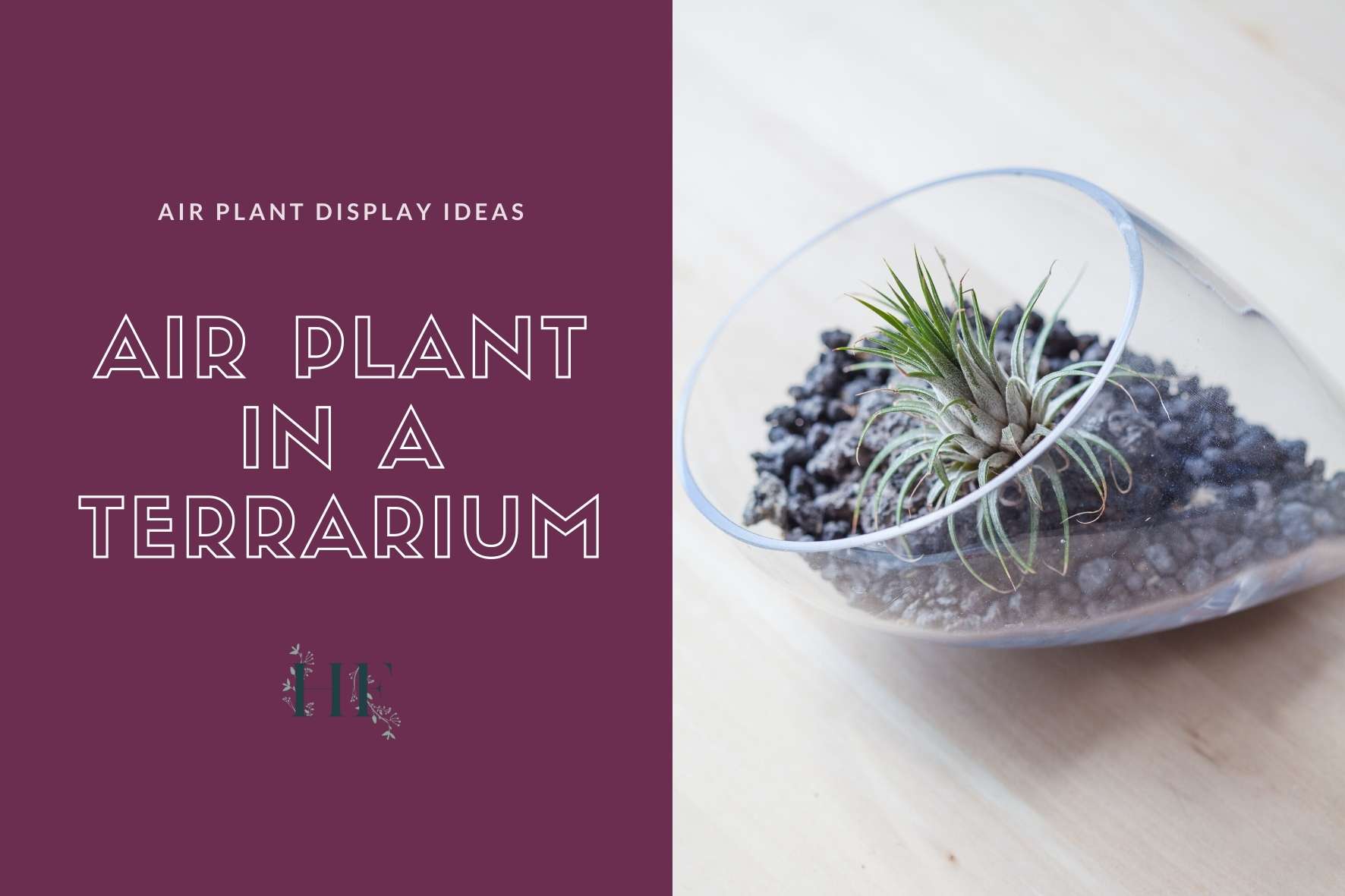
1) Open Glass Terrariums
An air plant in a terrarium is a common and beautiful display. These glass containers come in a range of different shapes and sizes. You can get:
- A globe terrarium (this one has a wide opening).
- An open geometric terrarium like this dodecahedron terrarium or this half pentagon terrarium (which has an even wider opening).
- For smaller Tillandsias, you may want to arrange them as an air plant collection, check these mini geometric terrariums that come in tear, pentagon and bowl shapes.
You can enhance your air plant terrariums by adding pebbles (which includes a selection of river pebbles, rocks, crystals and gemstones), seashells, and artificial moss (don’t use real moss since it holds too much moisture).
You can place the terrarium in a room that has plenty of light, like a living room. If you are considering your kitchen or bathroom (rooms that have a higher level of humidity), make sure that there’s plenty of air circulation. Otherwise, the terrarium can get condensed, keeping your air plant wet, which can cause rot.
Insider Tip: Closed terrariums don’t provide enough air circulation, even those with a small opening. A glass terrarium with a wide opening is preferable.
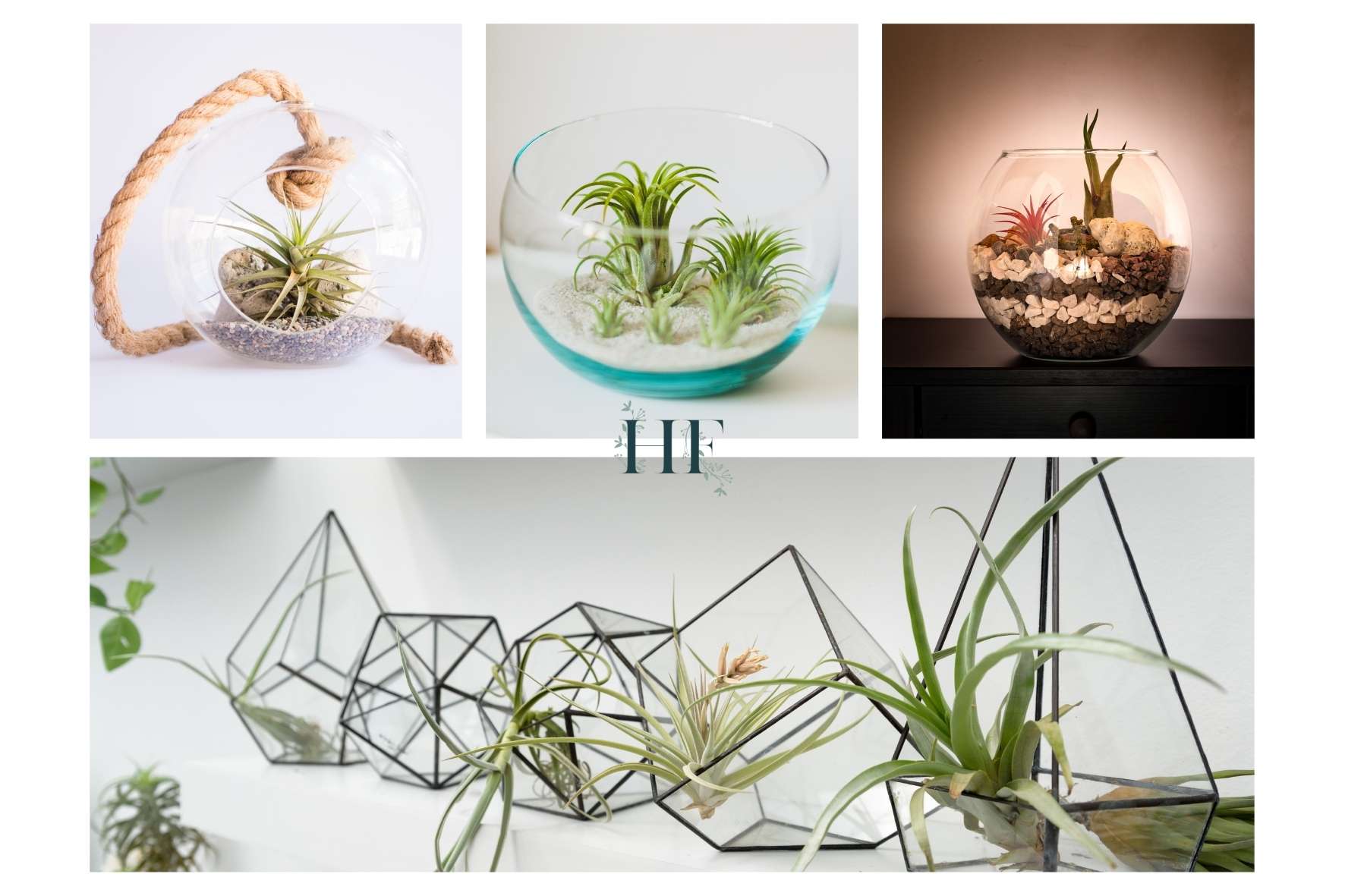
Mesic air plants can be displayed in transparent glass containers such as terrariums since they tolerate less air movement (or ventilation) and a more humid environment.
Here are some examples of mesic air plants: T. Bulbosa Guatemala, T. Andreana, T. Brachycaulos, and T. Butzii.
Xeric air plants, however, need good and unobstructed air circulation. T. Ionantha falls in this category, although you can often find them in a terrarium.
Read also: Air Plant Watering Guide – How to Water and Mist Tillandsias.
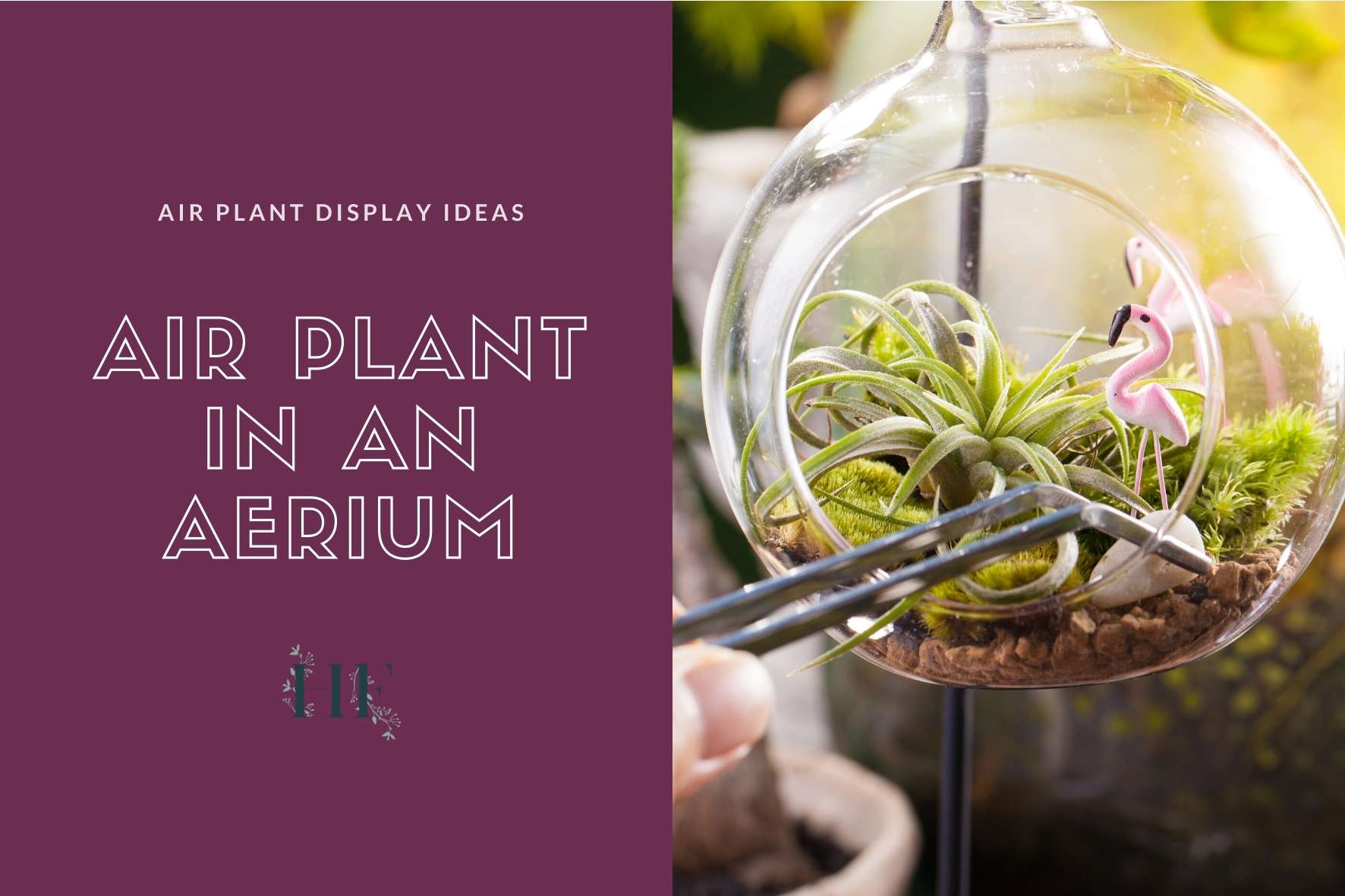
2) Hanging Glass Globes (a.k.a. Aeriums)
Wanting to suspend a terrarium from the ceiling?
If you are looking for an air plant glass ball or an air plant globe, aeriums are special glass globes designed for air plants. Since they have a big opening, they ensure good air circulation.
They are an alternative to terrariums and they come in different shapes and sizes; for instance:
- The teardrop aerium.
- The classic round globe with extra openings.
- The olive-shaped aerium.
Also, you may want to consider hanging geometric terrariums like these ones. However, if you’d rather not hang the aerium but still want to benefit from its air circulation, you can buy an aerium with a stand (this one has a heart shape).
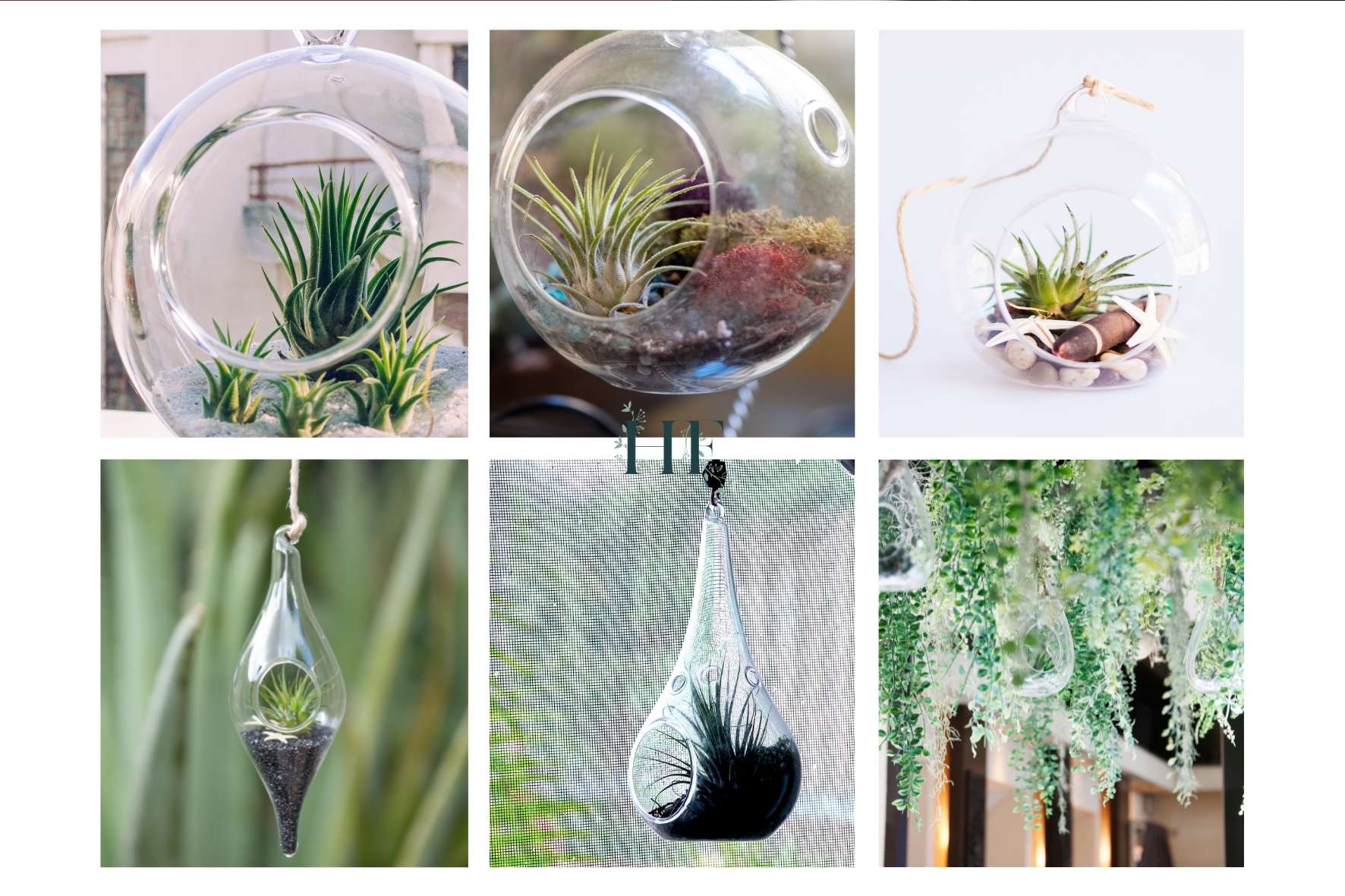
For all of these display options, you can add pebbles, rocks, crystals, sand or artificial moss to the aeriums.
Alternatively, you can look for a terrarium starter kit for air plants, which can be an easier option for beginners since they come with all you need, plus instructions!
You can place these glass containers on a tabletop or hang them on the ceiling to decorate your room.
Read also: Air Plant Environment – Light, Temperature, and Humidity Needs – to find out the best location for your air plants.
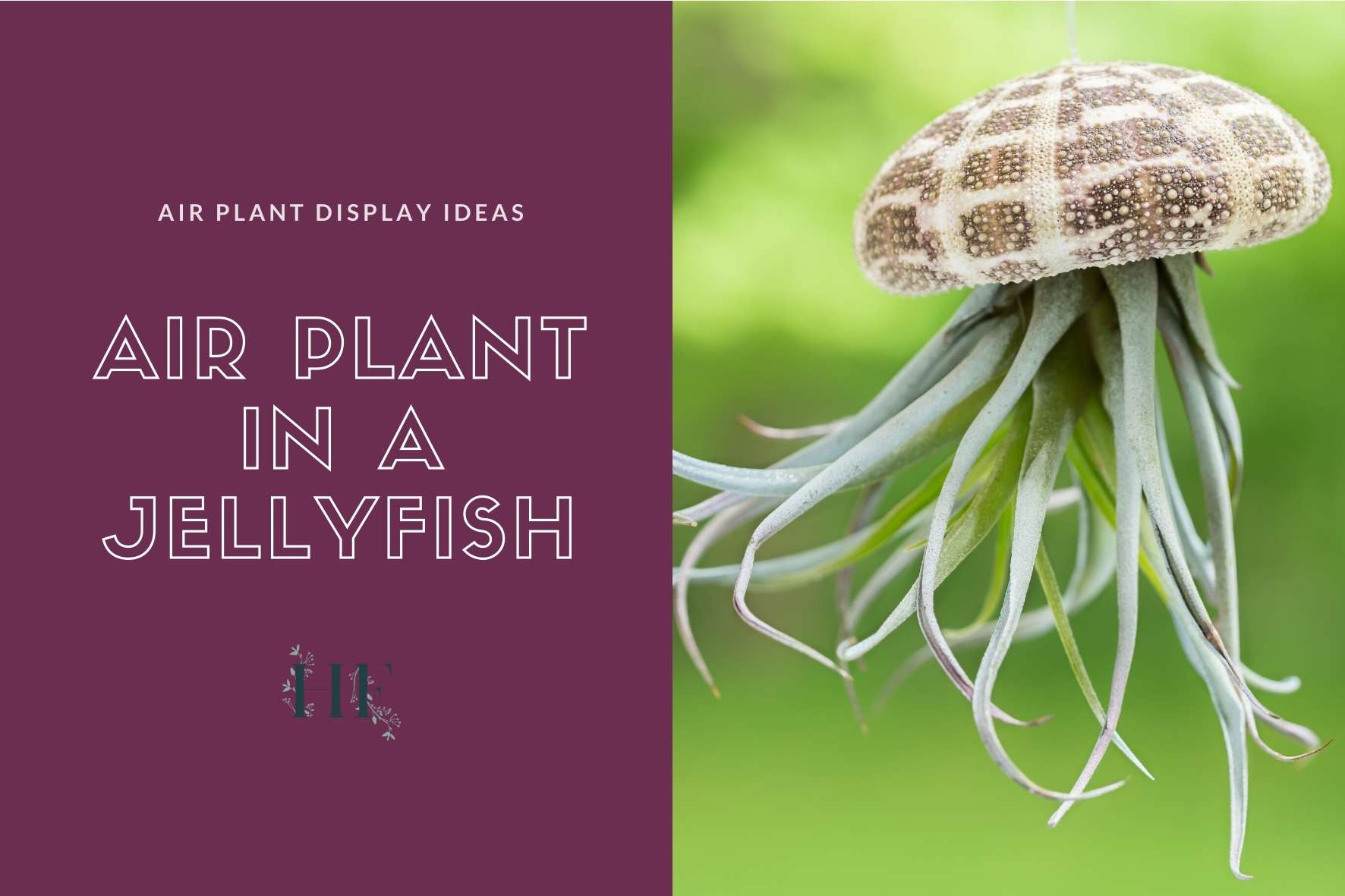
3) Jellyfish, Sea Urchins and Other Seashells
You can display an air plant in a shell too! I’m sure you have seen an air plant jellyfish (also known as sea urchin) arrangement on Pinterest.
The next trip you take to the beach, make sure to collect some nice looking seashells. You’ll be amazed at the attractive displays you can create given the variety of colours, shades and textures.
When using sea urchin shells to display air plants, you can either hang them using a piece of cord attached to the underside or place them on a flat surface. If you decide to hang it, check what type of glue you will need in the Air Plant Accessories section below!

Other air plant shell holders include conch shells (natural ones) but also ceramic conch shells. You can even find beautiful corals made of ceramic, like these ones (they come in different colours too).
Insider Tip: Remove your air plant from its shell when watering. Leave the plant out to dry for up to 4 hours, i.e., until the plant is completely dry. You will damage the air plant if you return it to the sea urchin while still wet, and will eventually rot. However, you can lightly mist it whilst hanging upside down from the sea urchin since the water won’t gather at its core.
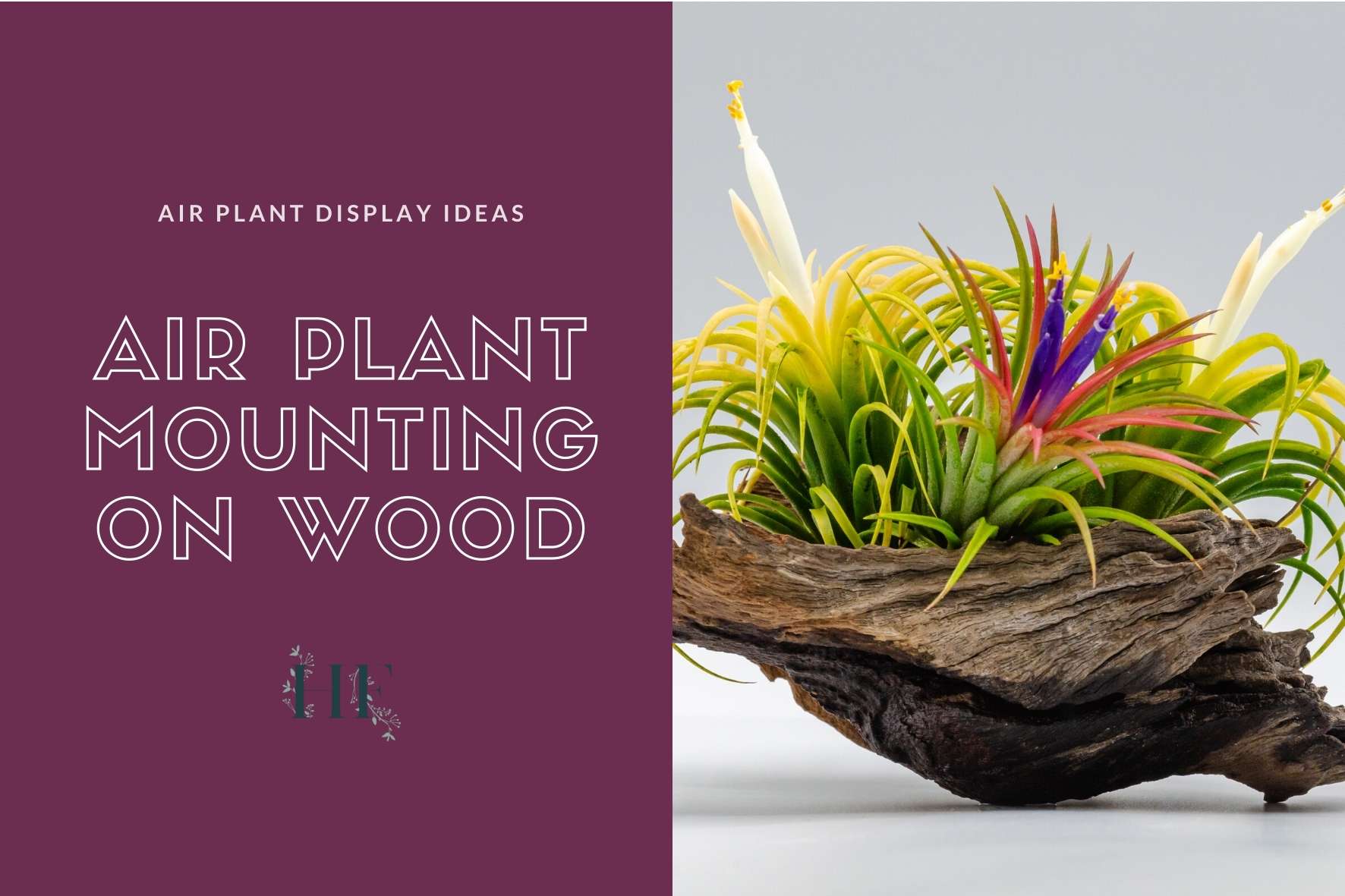
4) Mounting on Wood
Air plants thrive best in the open display (like mounted on wood or standing on a rock), so they get plenty of air around them.
Common mounting surfaces, apart from seashells, include driftwood, rocks, and bark pieces.
Insider Tip: Don’t use cooper wires and pressure-treated wood, since this is impregnated with copper; copper will kill your air plant.
If you decide to hang it, you will want to attach your air plants to it. Check what type of glue you will need in the Air Plant Accessories section below! Includes other mounting options too.
Here are some air plant driftwood, bark and wood stand examples:
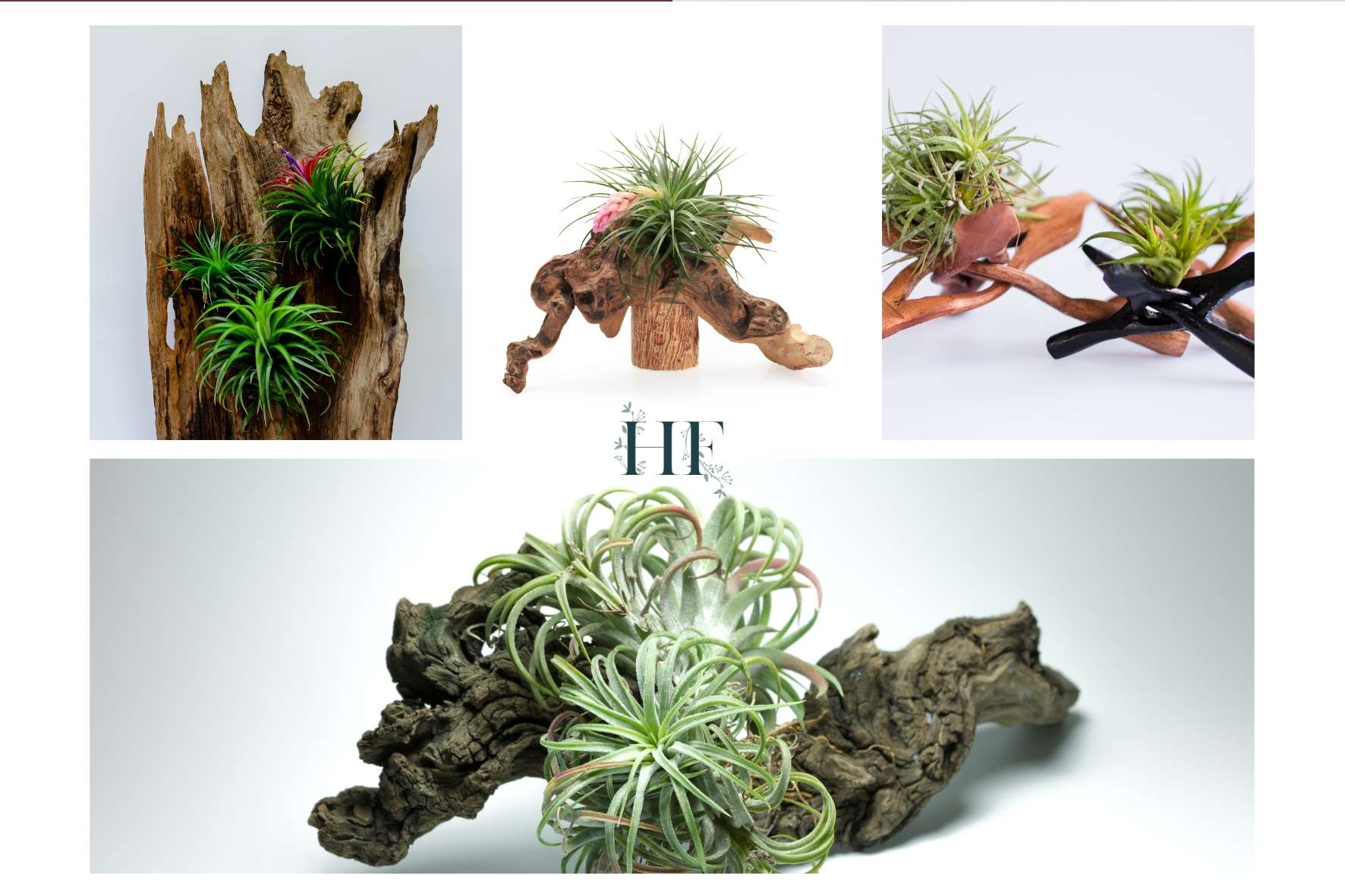
Note: Driftwood is wood that has been washed onto a shore or beach of a sea, lake, or river by the action of winds, tides or waves (source). Ensure that the mounting object remains free from fungus growth as that can harm your air plant.
You can mount your air plant on natural cork bark. It can be attached to the wall or you could use a wire or cord to suspend it from the ceiling. For wall displays, make sure to buy cork bark flats or you won’t have a flat side to put on the wall.
Insider Tip: If you decide to glue your air plant to its display, make sure that you are able to water using the dunking method, at least. If you are looking for a more hands-off approach, you might want to choose a wood display that doesn’t require you to glue your air plant (check the options below).
Finally, here are other wood display ideas where you don’t need to use glue (i.e., no need to mount the air plant):
- A sculptural wood holder like this one.
- A natural rubberwood display tray, which is a great tabletop accessory for displaying an air plant.
- A wooden tripod stand to display your Tillandsia on a tabletop or shelf.
- A wood slice stand – this is an air plant holder for DIY lovers. You need a wood slice for the base and some wire to keep your air plant standing.
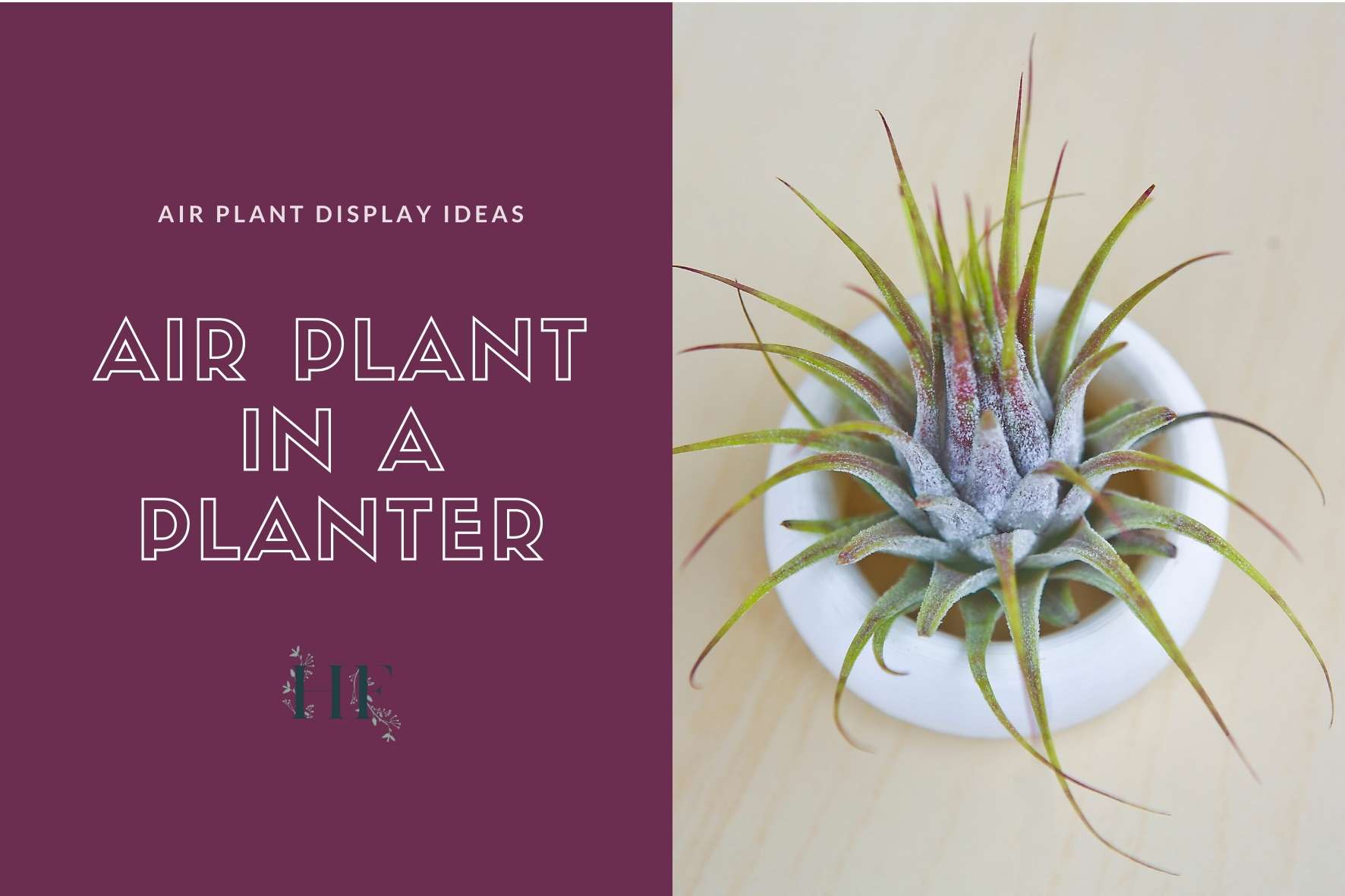
5) Ceramic Planters and Sculptures
Before moving into more creative display methods, you can still go for a traditional planter if that’s the look that you prefer.
Sometimes, the simpler the display, the easier it is to take care of your air plant. Plus, there are beautiful concrete and ceramic pots for air plants. You can also look for wall mounted planters, like this ceramic hanging planter.
But, if you are looking for a planter with an animal shape or another type of sculpture planter, check these ones:
- Ceramic people planter for air plants – in this one they are holding hands, but they have other options.
- There’s a wide selection of ceramic animal planters on Amazon too; the whale is one of my favourites!
- This face pot is a beautiful idea to display Spanish Moss (T. Usneoides).
- The hand planter is a very convenient display for smaller air plants.
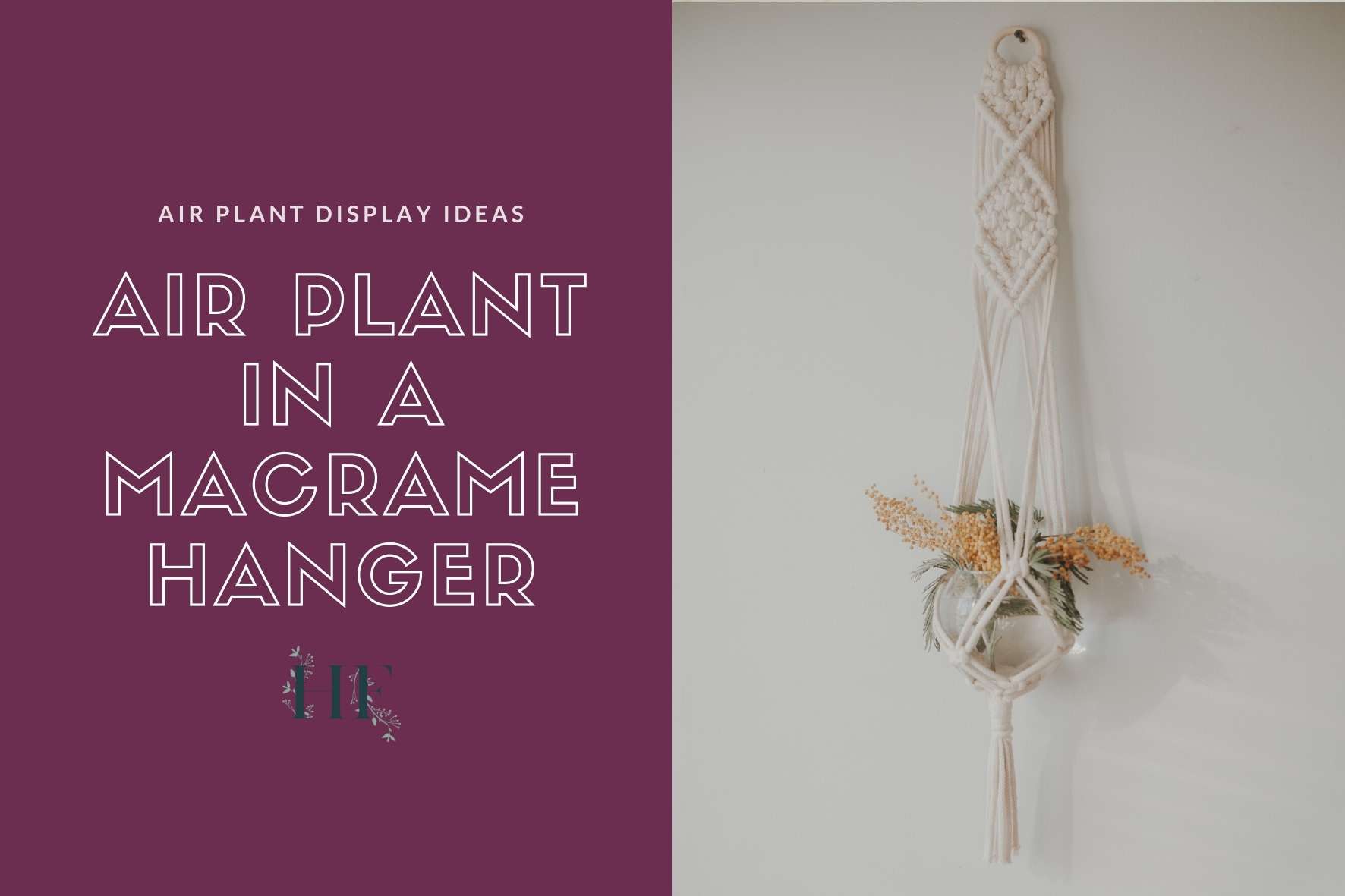
6) Macrame Plant Hanger
Another air plant hanging option is a boho macrame plant hanger. Whether you opt for a pot or leave the plant bare, a macrame holder brings texture to the look.
Here are some examples of both options:
- Small macrame hanger designed for air plants with a bamboo ring to support the plant.
- Cotton macrame rope wall hanger that accommodates various shapes and sizes of planters and globes.
This hanging option also ensures good air flow.
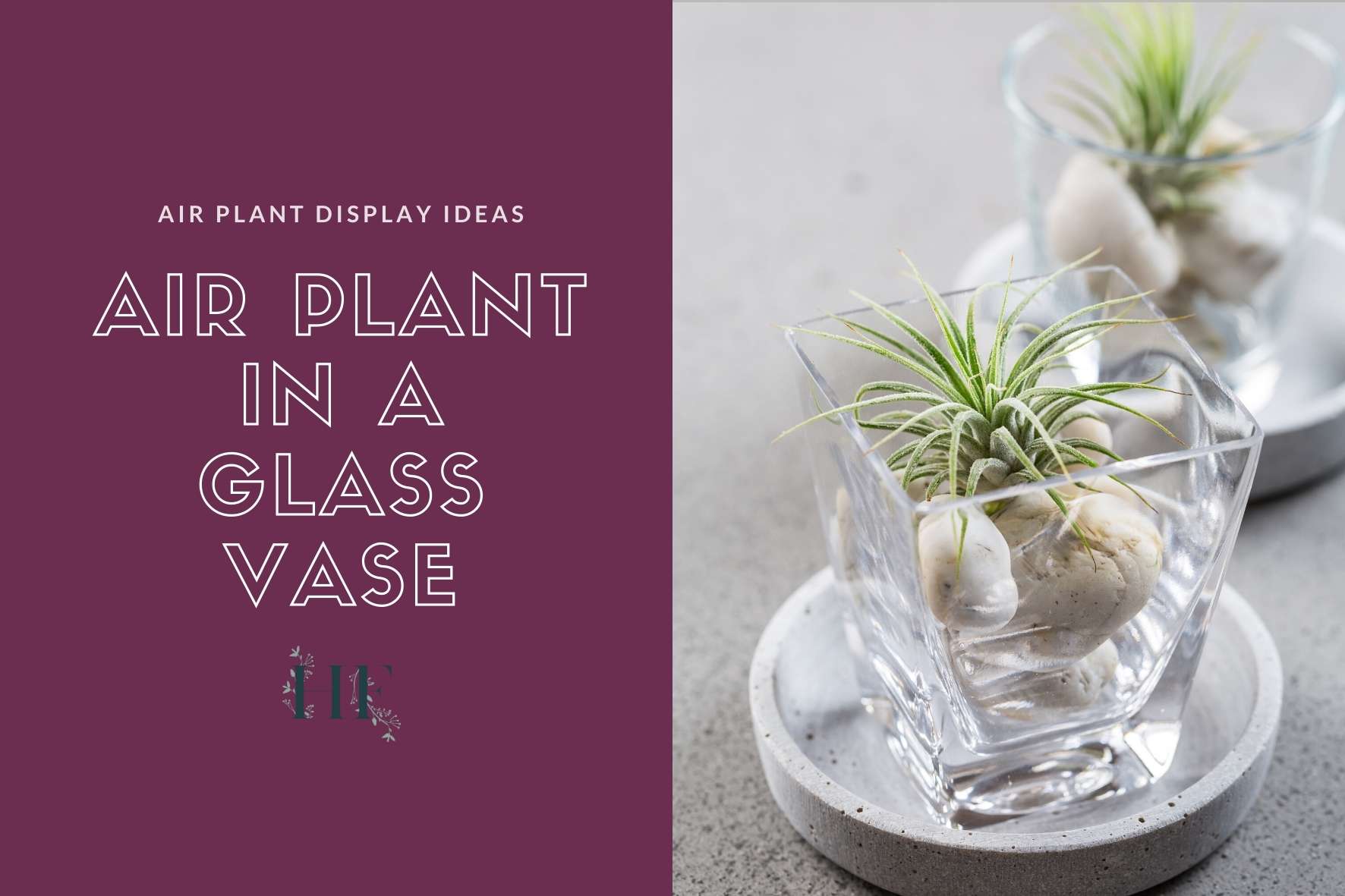
7) Glass Vase
Another alternative to displaying air plants in glass is using a vase.
An air plant in a glass vase can thrive as long as the opening of the base is wide enough, especially if you elevate the plant using some pebbles (like in the image above).
You can use coloured pebbles, stones or crystals to create a colour contrast. Or the opposite – a harmonic display.
To achieve the look in the photo above, you can use a square vase (size: 4x4x4).
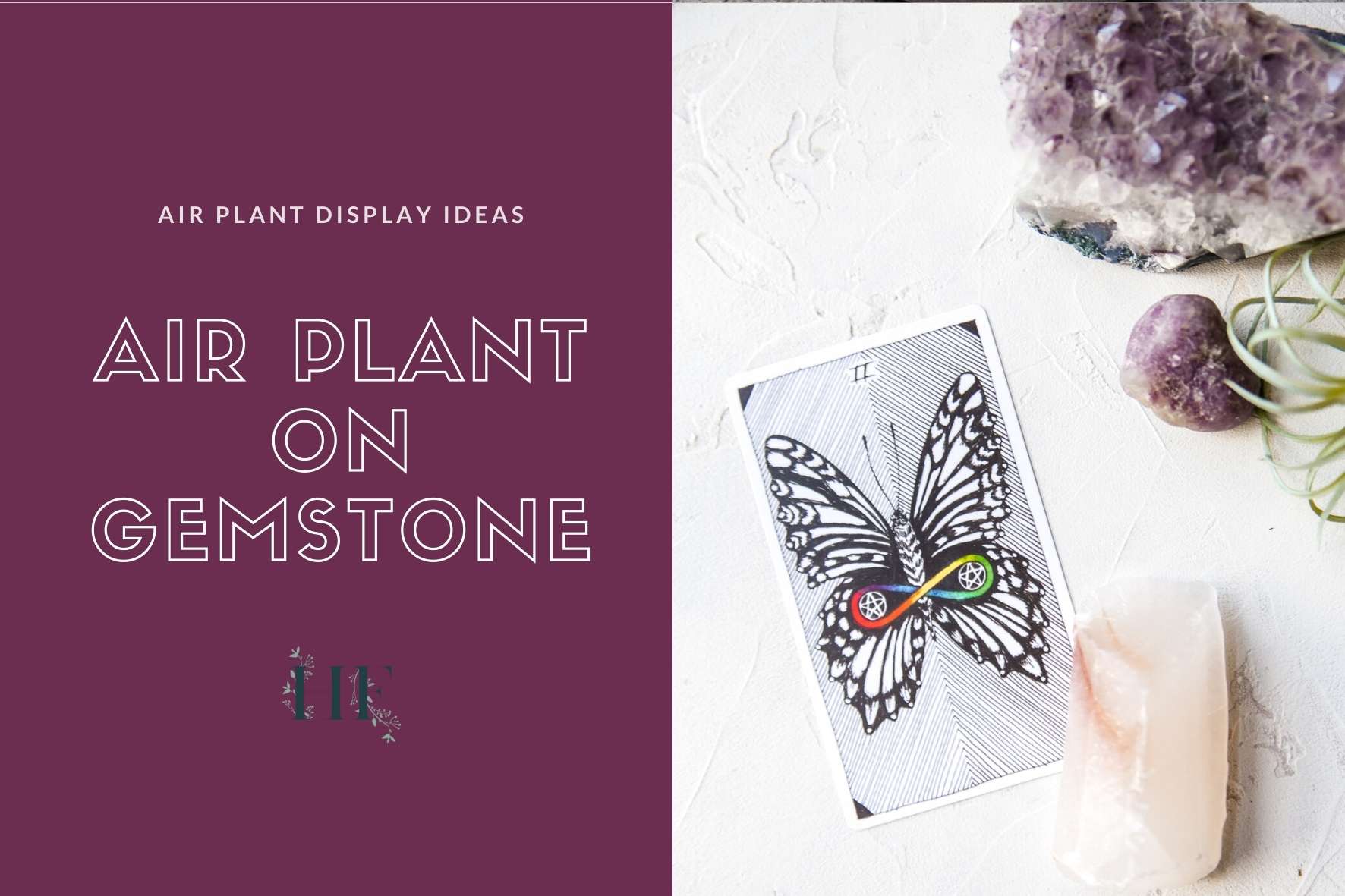
8) Gemstone Holder
Why not combine healing stones and air plants?
Display your air plant with a glistening amethyst rock display. You can either place them on a table or shelf. Also, you can create an air plant centrepiece by adding a tray underneath and placing other gemstones too.
If the tray option doesn’t convince you, what about a triangle shelf or moon shelf to display both gemstones and air plants?
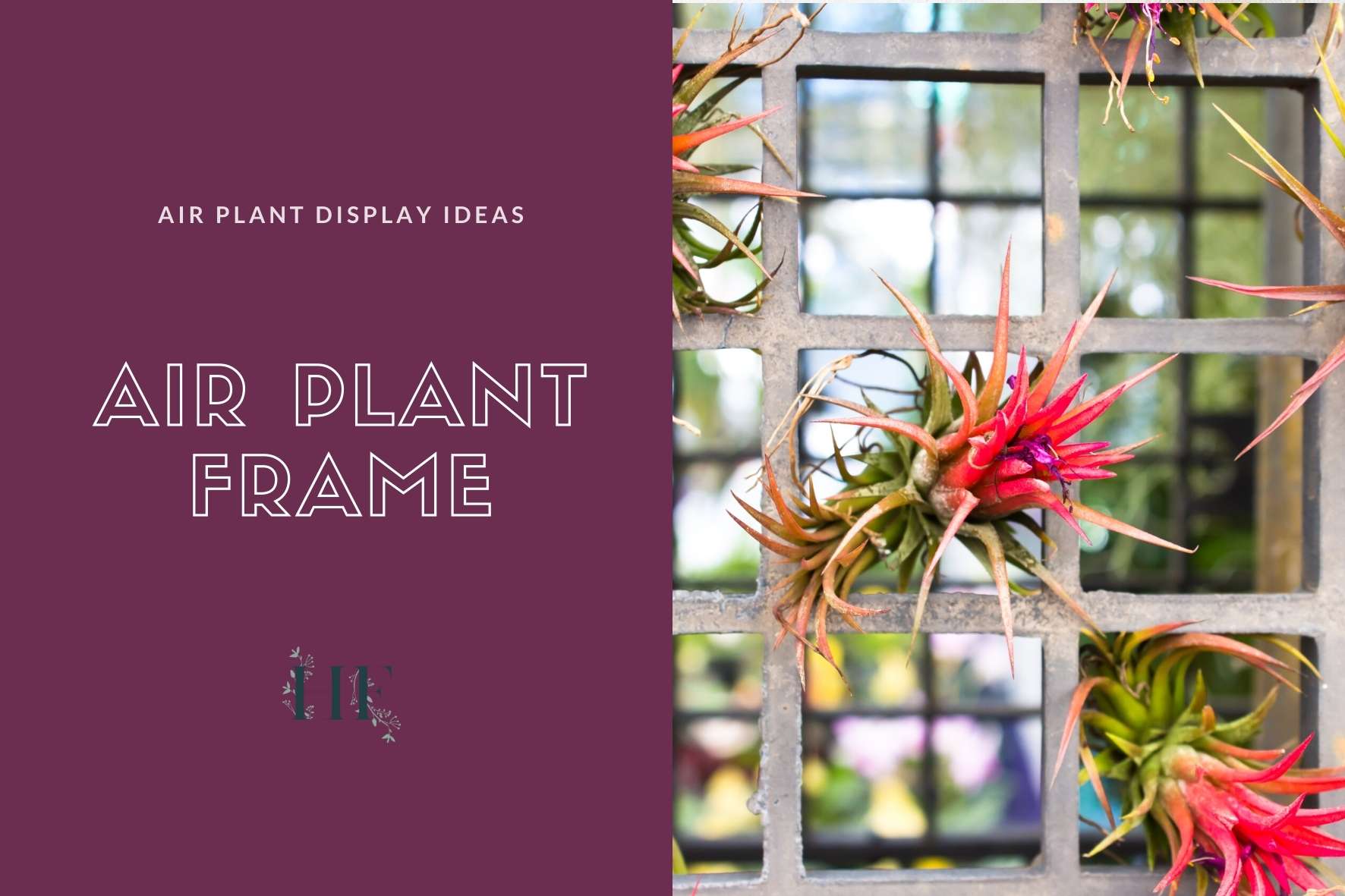
9) Air Plant Frame
This is a wooden display frame for arranging multiple air plants whilst ensuring good air circulation and light exposure. You can hang it against a wall, as you would a frame. You will get a living wall art.
The image above doesn’t do it justice, so you can check this air plant frame instead to get a better idea of how this idea will look.
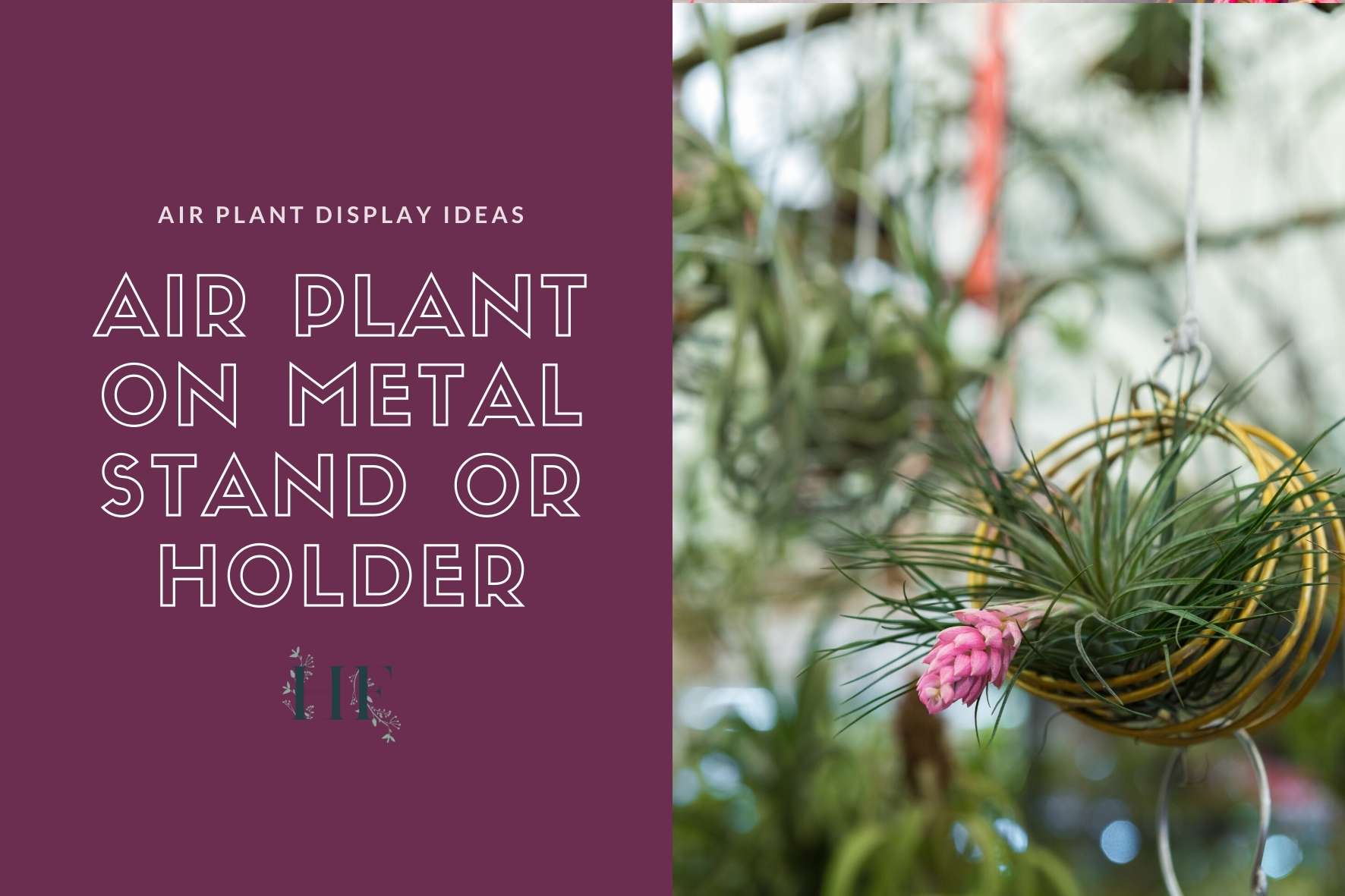
10) Metal Plant Stand or Holder
Designed specifically for air plants, this metal frame is a great decorative accent that provides the perfect place to prop up a Tillandsia. It’s ideal for displaying a variety of species.
- A tabletop metal geometric stand, where you can prop your air plant.
- A geometric holder that you can hang, like aeriums. You can also display air plants that naturally hang.
Other Air Plant Arrangements
In case you need further inspiration, here are some DIY air plant holders:
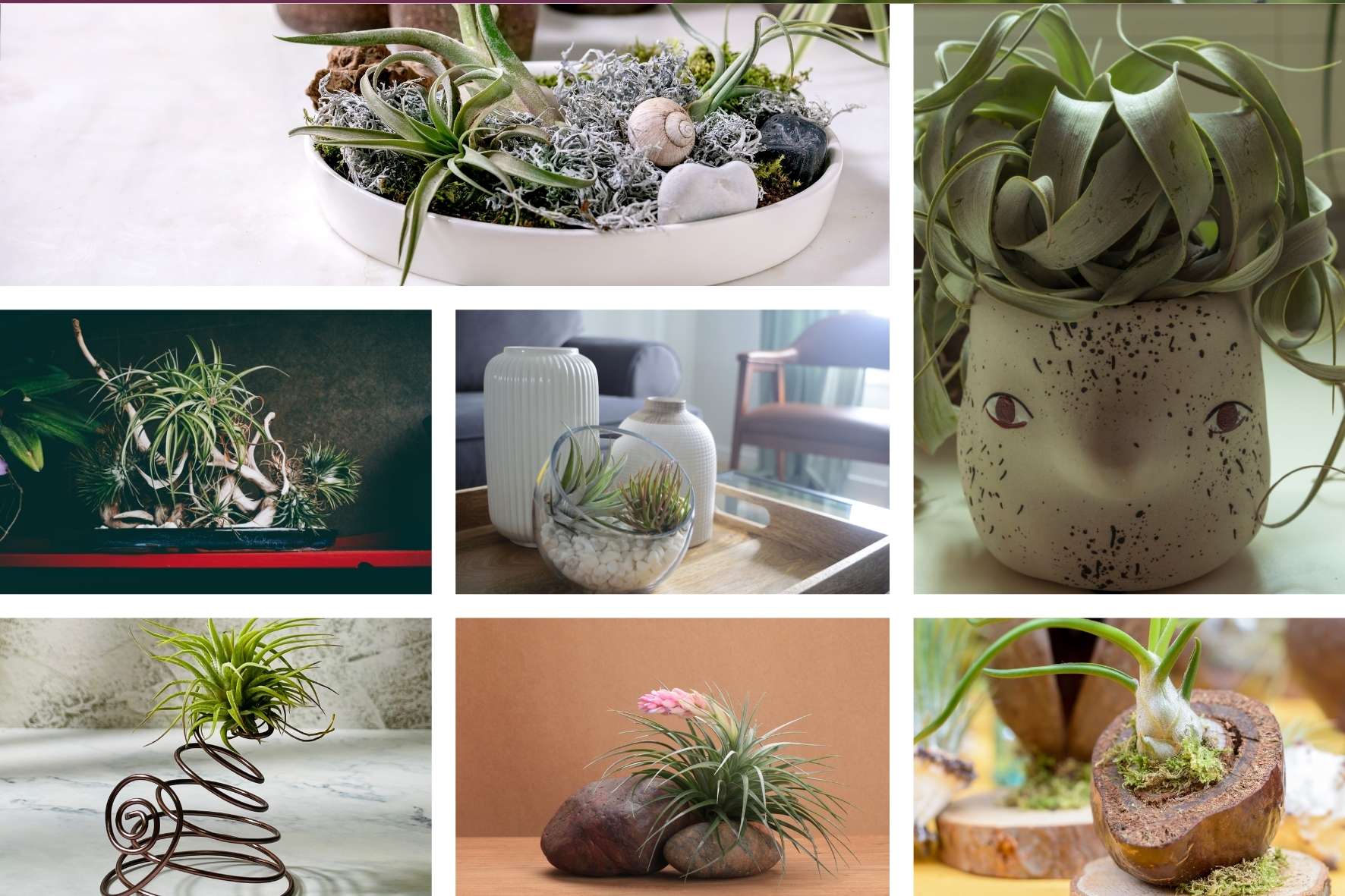
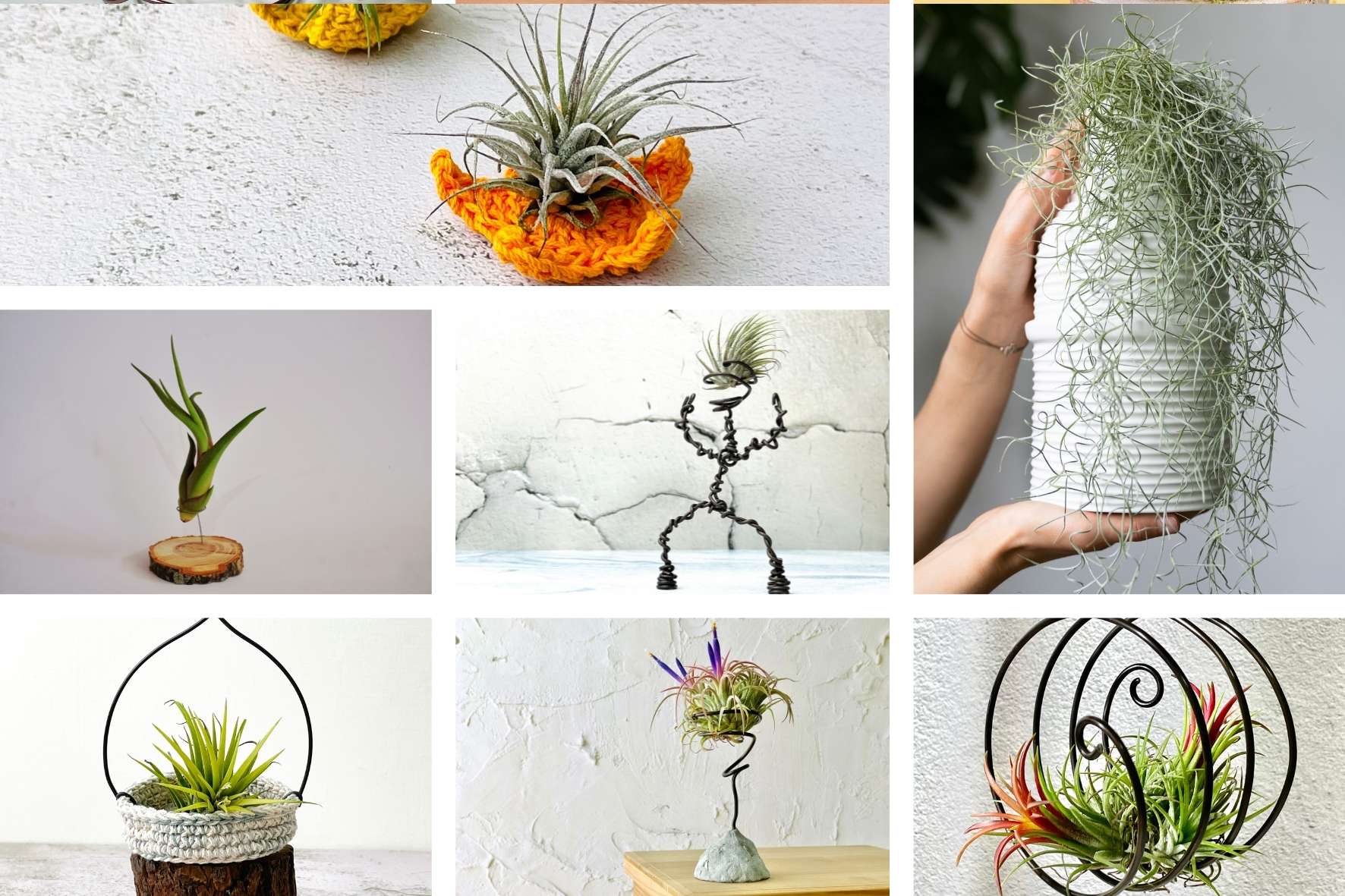
Air Plant Accessories
These are a selection of air plant accessories that can come in handy. Have a look at what to take into account when buying them.
Air Plant Glue
When mounting, you might need an air plant adhesive.
So, what kind of glue do you use to mount air plants?
Waterproof glue that dries clear is one of the best options, but any glue is fine other than Superglue. Plumbers glue, which is waterproof, is a good option. Plus, it doesn’t break down.
Using hot glue or liquid nails means you will be re-mounting again in the future because it will be constantly getting wet.
| Good for Mounting | Avoid when Mounting |
|---|---|
| Gorilla waterproof wood glue | Hot glue |
| Goop glue or plumbers glue (all-purpose, clear) | Liquid nails |
| Shoe Goo | Cooper wire (kills plants) |
| Fishing line (different colours, including clear) | Superglue |
| Twist ties for plants | |
| Nails* | |
| Staples* | |
| Sring | |
Air Plant Moss
If you are planning on using moss to decorate your terrarium or aerium, don’t use real moss since it holds too much moisture and it can cause your air plants to rot. Here’s a selection of artificial moss to consider.
Also, it’s best not to use Spanish Moss (T. Usneoides) as decoration inside a glass globe. This air plant needs air circulation and space to hang.
Air Plant Pebbles
There’s a variety of pebbles, gravel, stones, crystals, gemstones, etc. that you can use to decorate your air plant display. Check here for some ideas.
Also, you can use them to elevate your plant, ensuring an optimal level of air circulation since it’s not buried at the bottom of the glass container.
